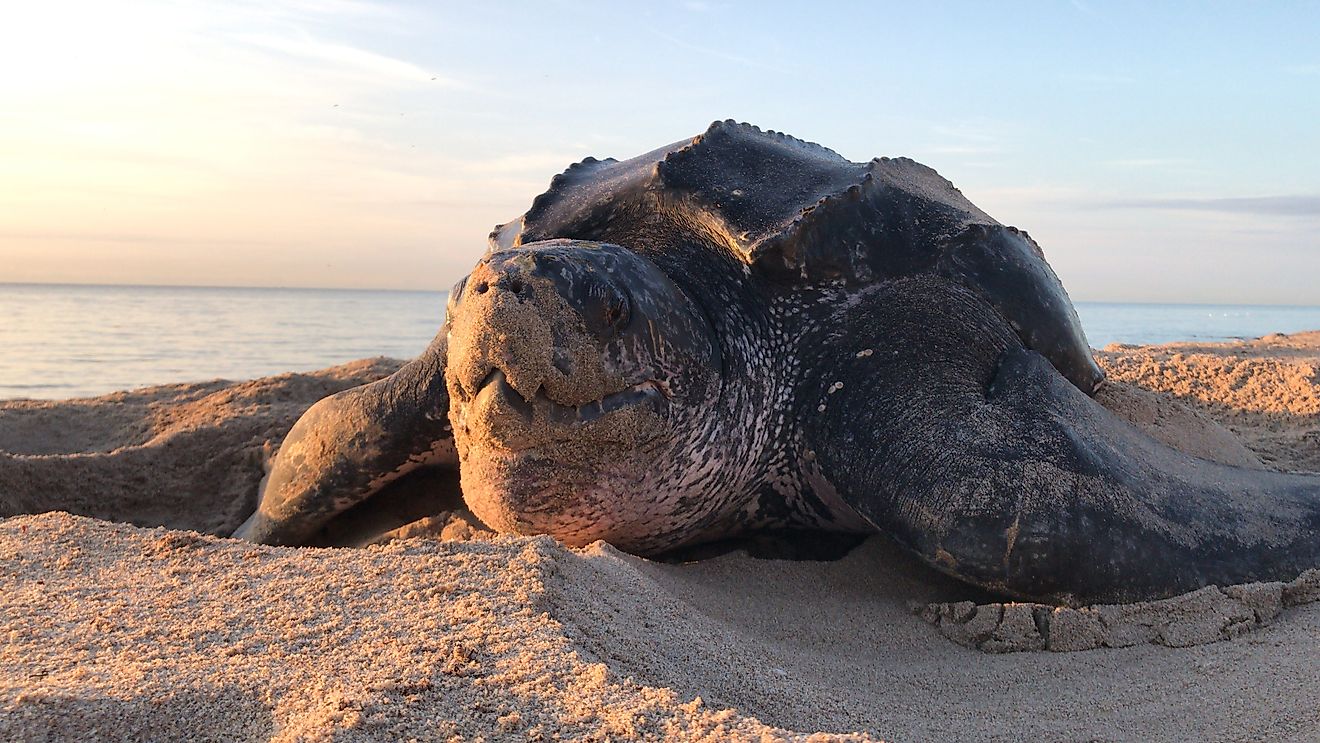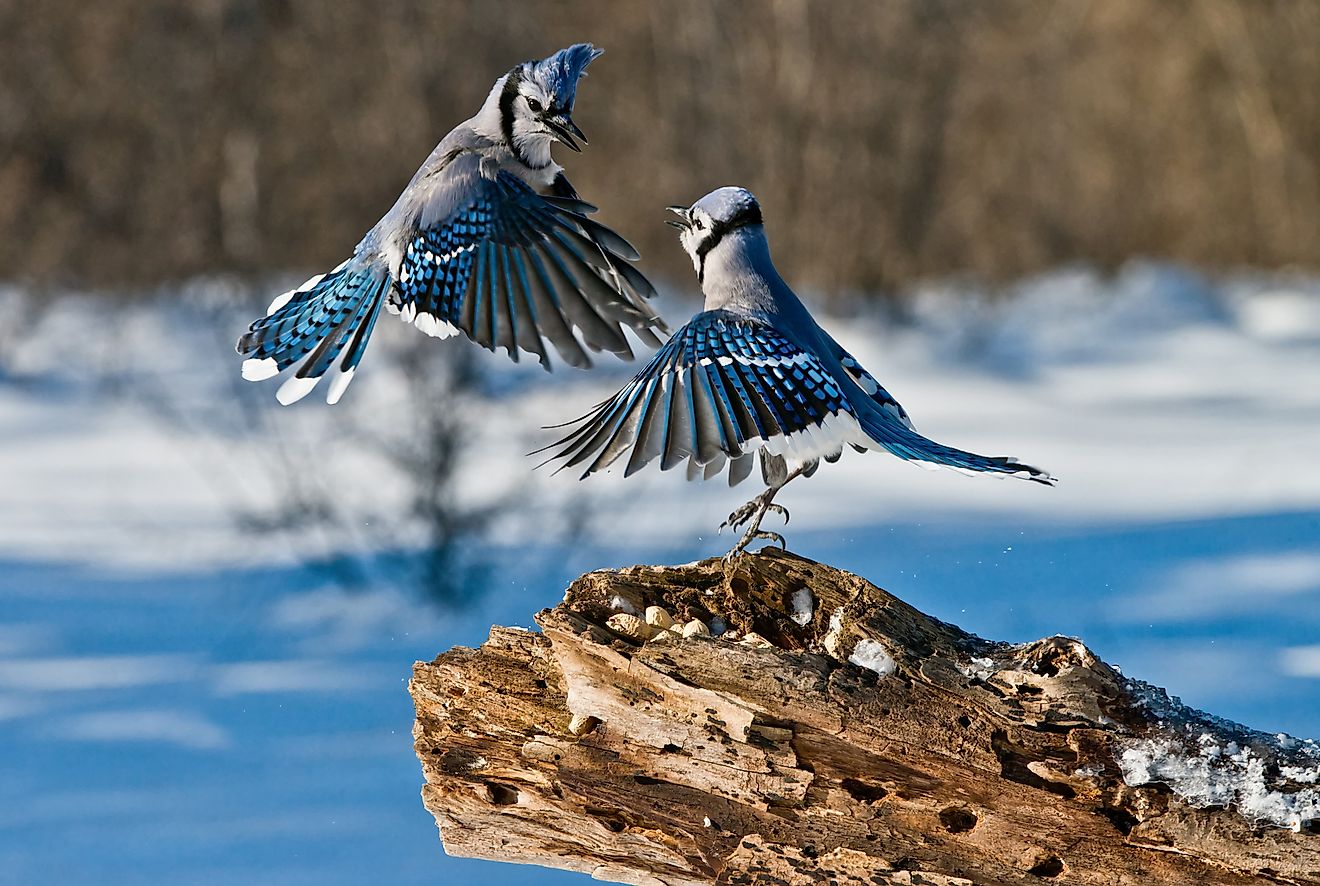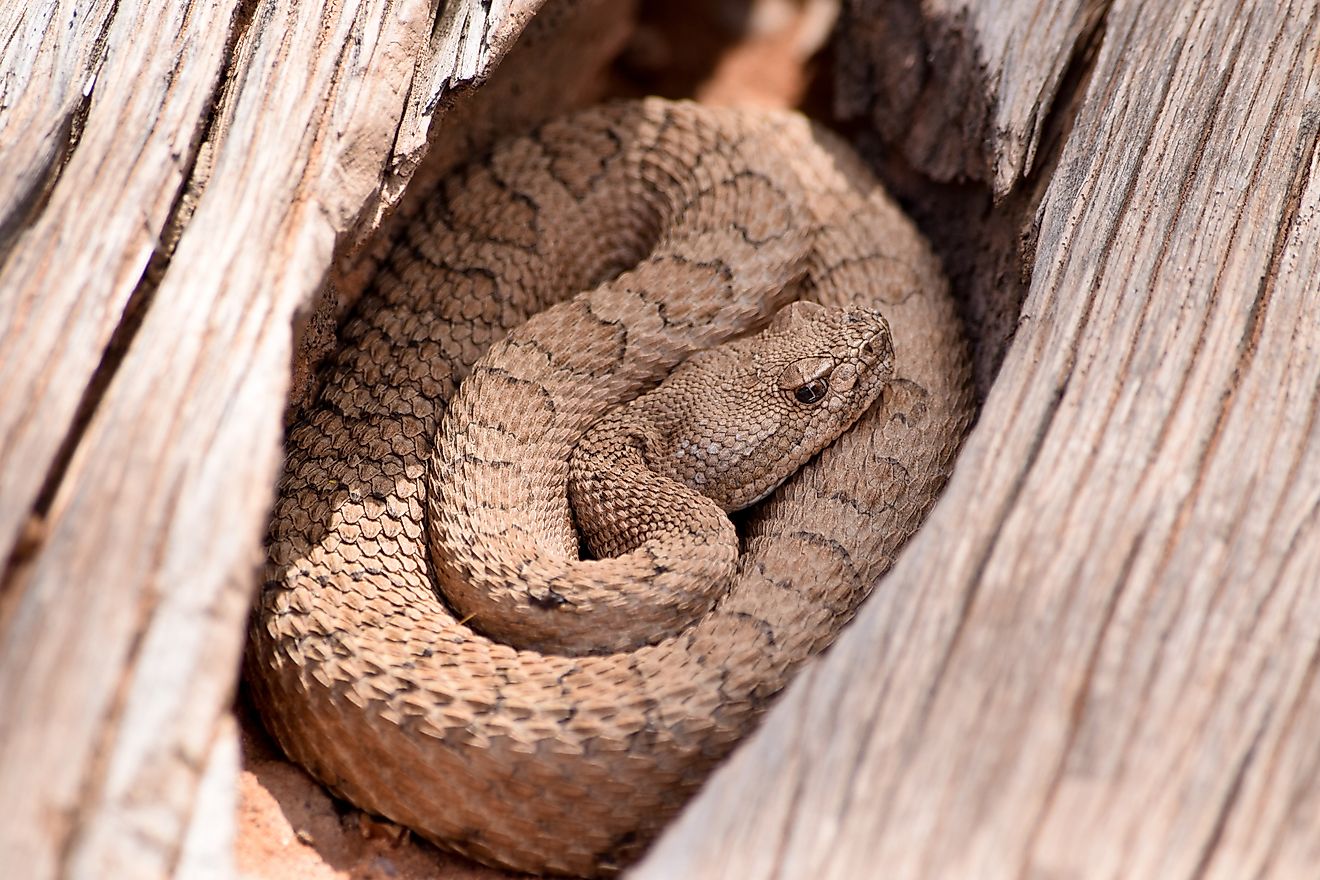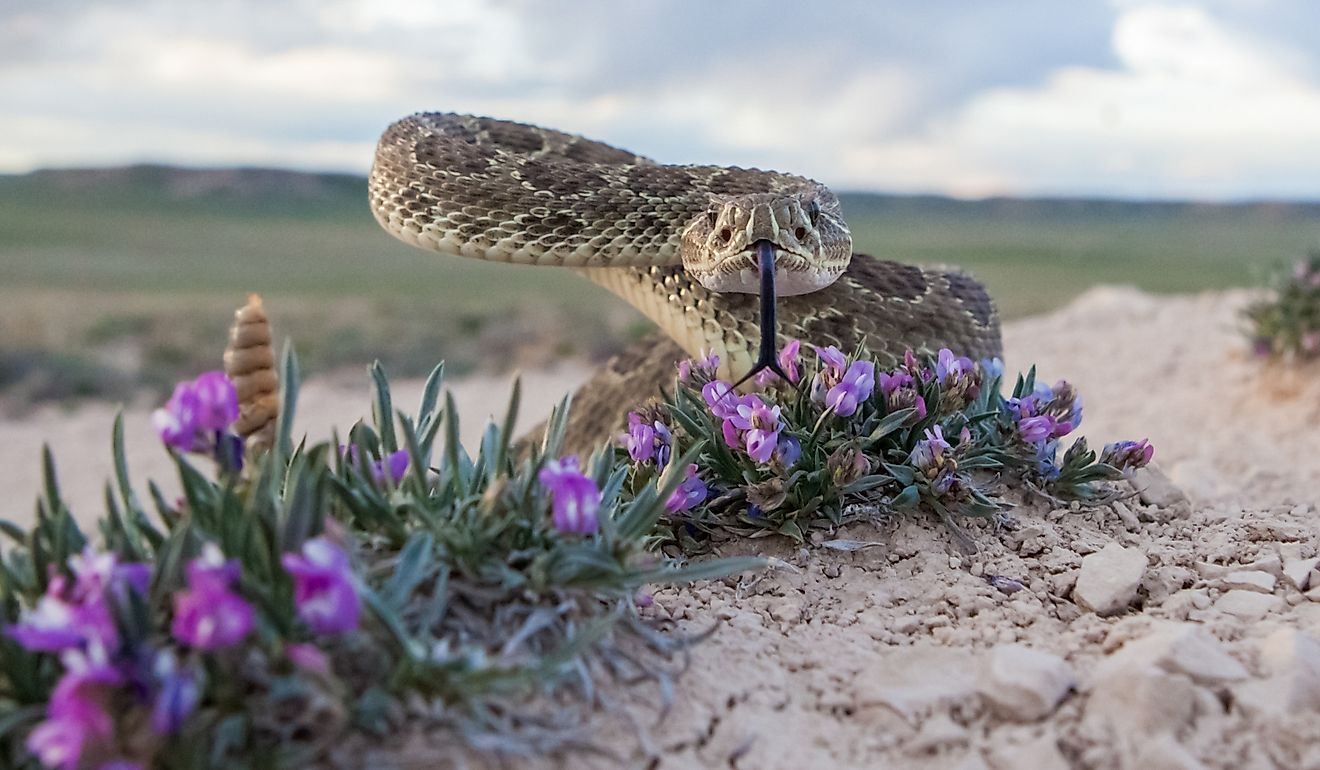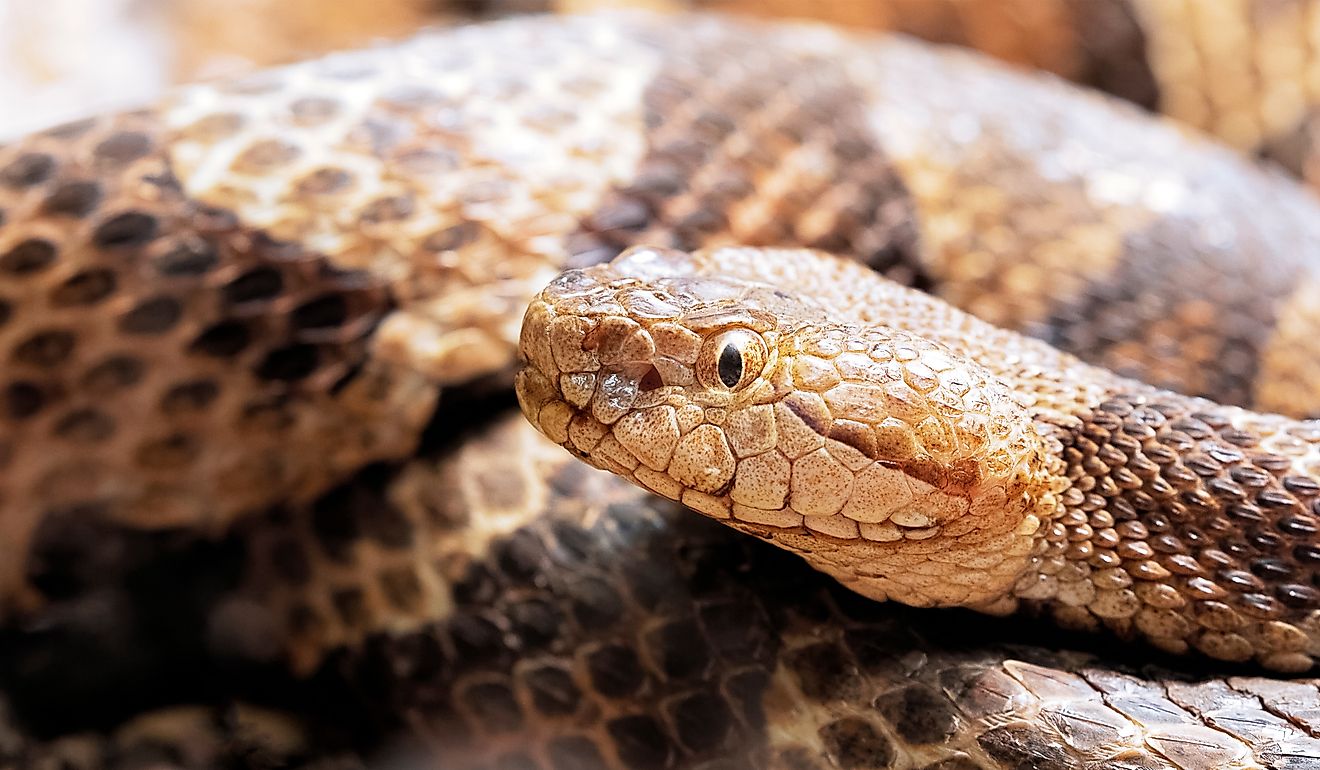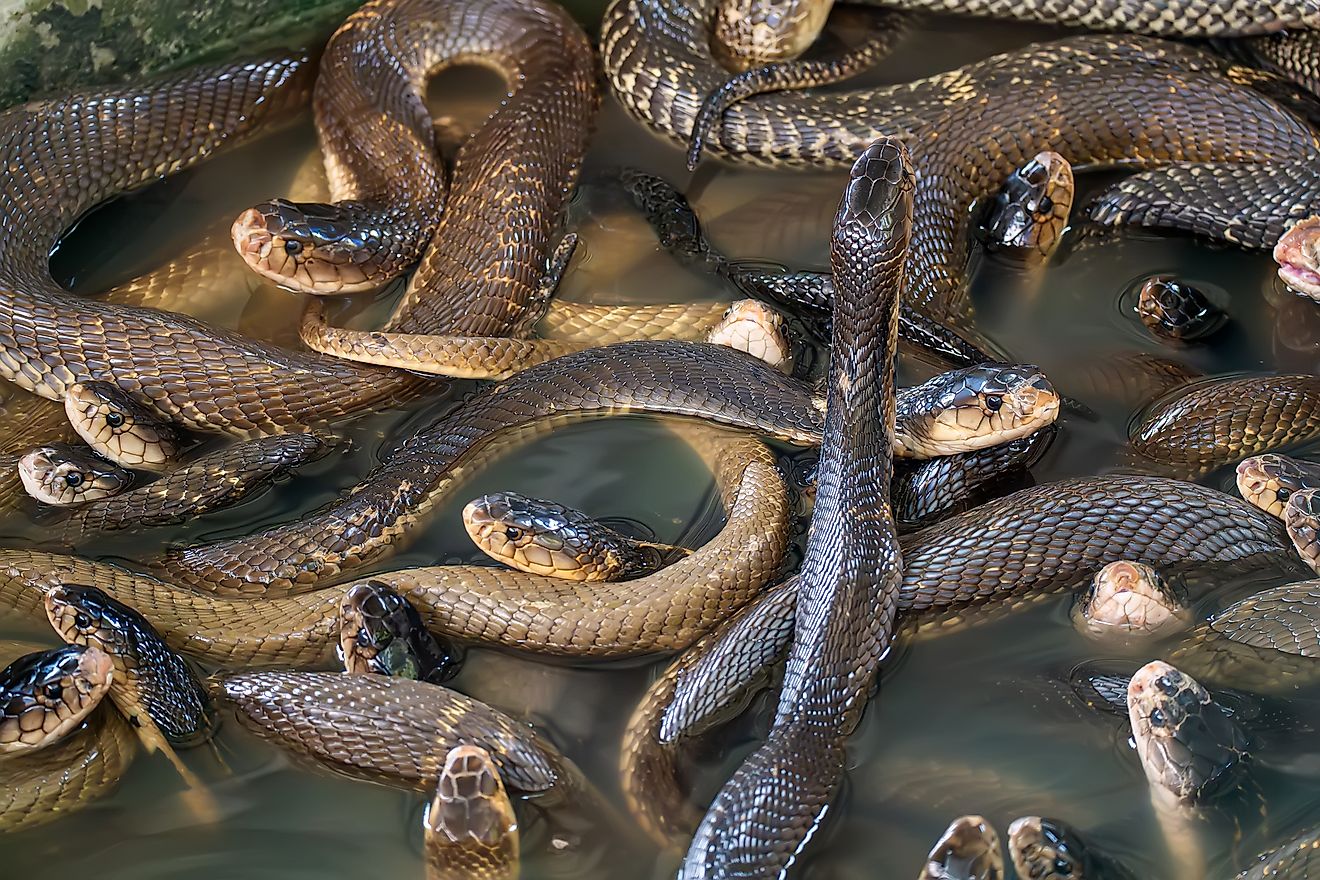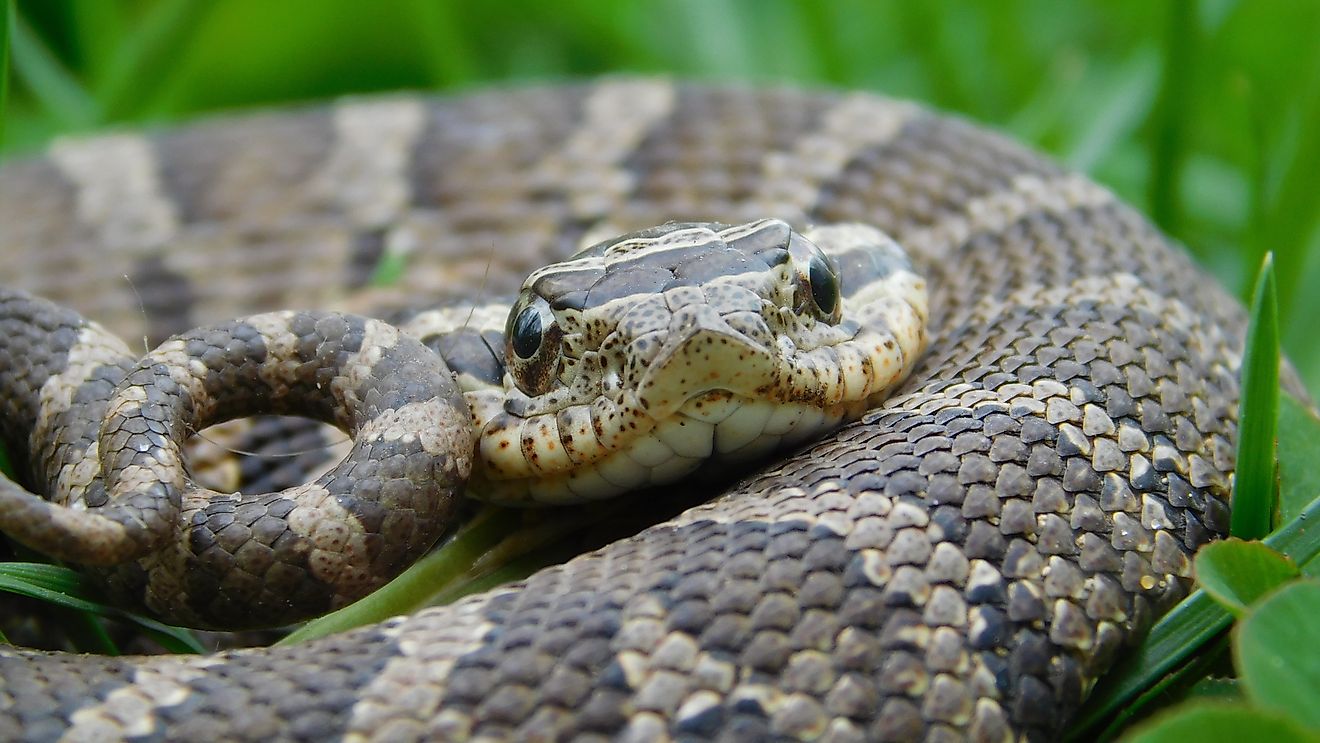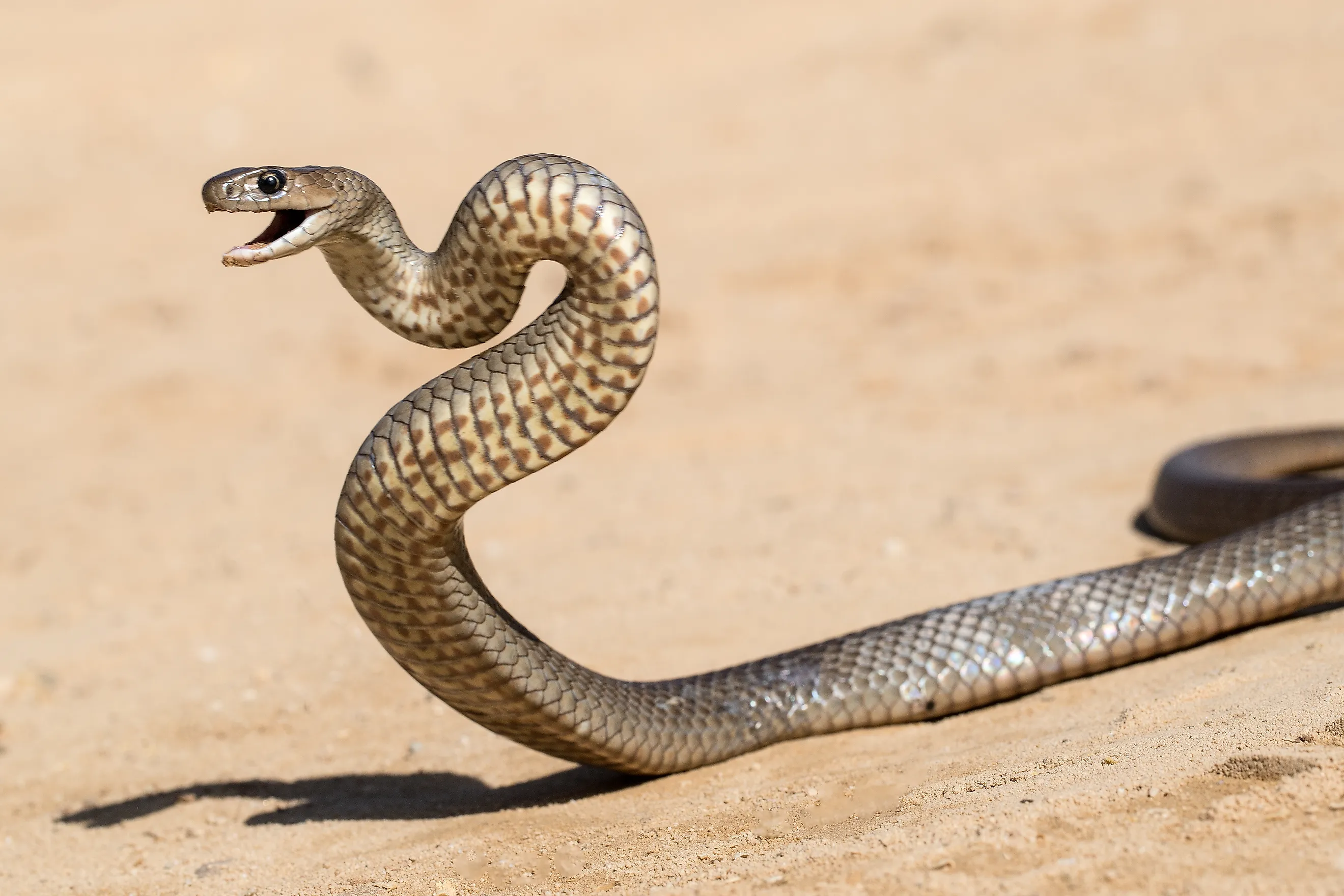
The Venomous Snakes Of Victoria
Victoria, in southern Australia, is home to a variety of deadly snakes, some of which are among the most venomous in the world. These snakes inhabit diverse environments, ranging from coastal regions to dense forests and arid landscapes. Each species has adapted to its habitat in unique ways, and many of them have distinctive appearances. For anyone living in or visiting Victoria, it is important to be aware of the snakes that inhabit the area and the risks they present. Below are eight of the deadliest snakes found in Victoria.
Eastern Brown Snake
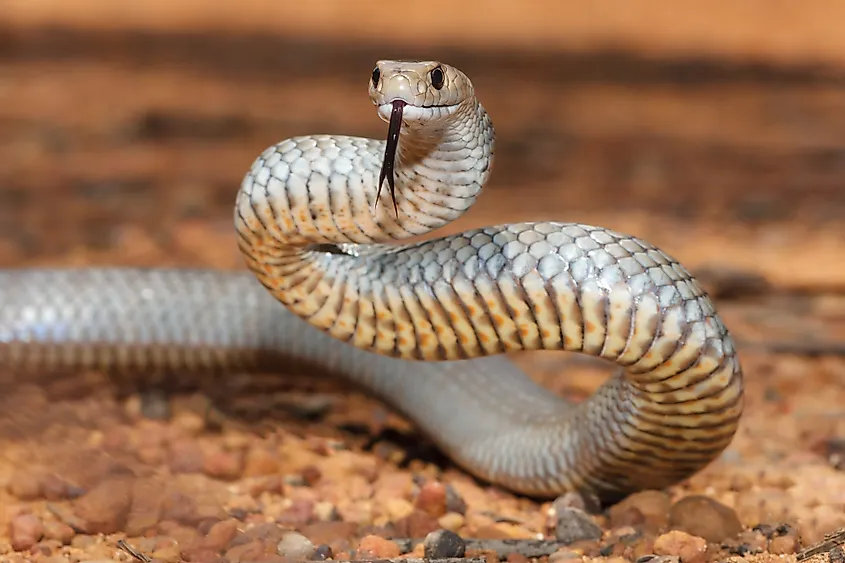
The Eastern Brown Snake (Pseudonaja textilis) is perhaps the most notorious of all the snakes in Victoria. Sometimes called the Common Brown Snake, this species is highly adaptable and thrives in a wide range of habitats, including open grasslands, woodlands, agricultural areas, and even parts of Melbourne. Due in large part to land clearing for agriculture, the Eastern Brown Snake has recently experienced a population boom that has led to more frequent human encounters. Its distinctive appearance features a slender body with various color patterns, ranging from light brown to dark brown. Some individuals may even have a reddish hue.
Known for its aggression and speed, the Eastern Brown Snake can strike quickly when threatened; they typically indicate an imminent attack by raising their head and retracting their bodies. It is considered the second-most venomous land snake in the world, with venom containing neurotoxins and coagulants that can cause paralysis and internal bleeding. It is responsible for more snakebite fatalities in Australia than any other species.
Tiger Snake
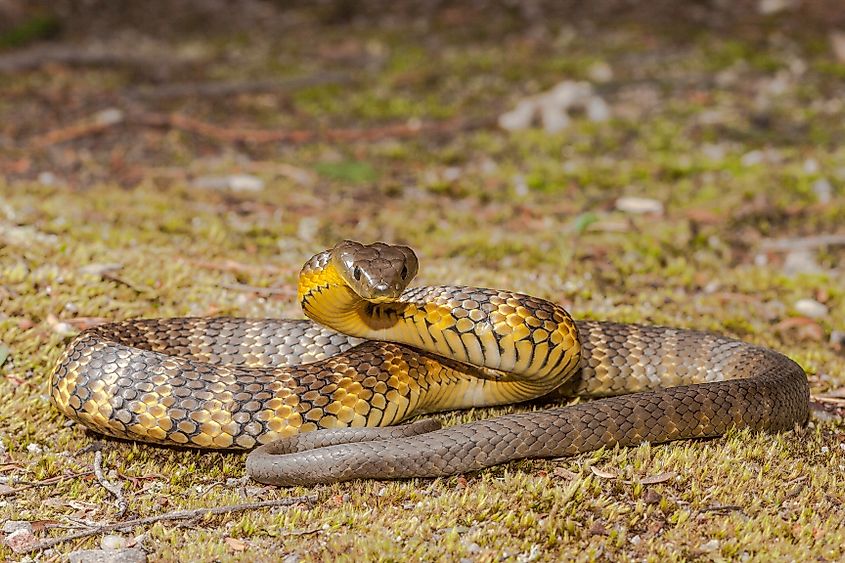
The Tiger Snake (Notechis scutatus) is another highly venomous snake in Victoria. This species typically prefers areas with abundant water, such as swamps, marshes, and riverbanks, although they can be found in grazing lands where water is available. The Tiger Snake gets its name from its striking banded coloration, which can range from yellow and black to a more subdued grayish pattern.
Despite its markings, the Tiger Snake is not always easily visible in its environment, where it often blends in with the vegetation. Unlike most snakes, tiger snakes can climb man-made structures as well as natural ones and are as high as ten meters above ground. The snake's venom contains neurotoxins, coagulants, and myotoxins, which can cause paralysis, bleeding, and muscle damage. While the Tiger Snake can be aggressive if provoked, it generally avoids human interaction.
Red-Bellied Black Snake
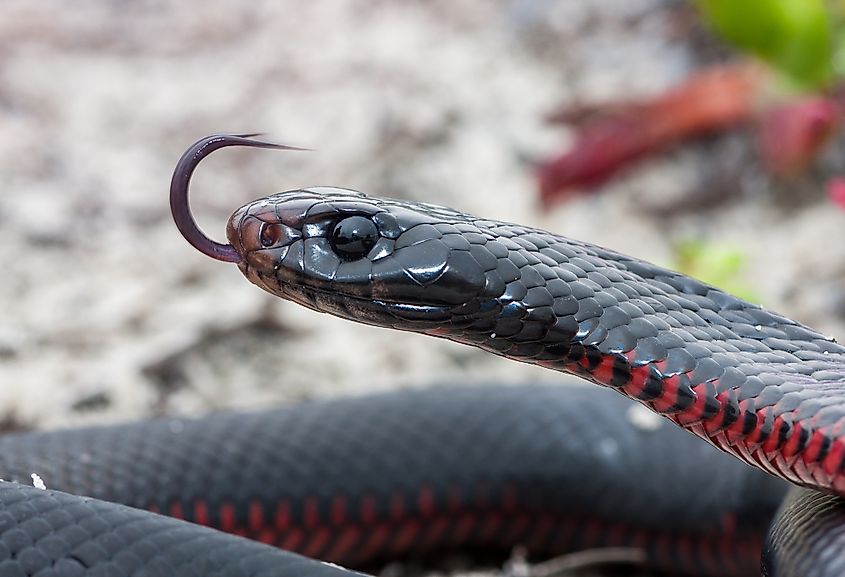
The Red-Bellied Black Snake (Pseudechis porphyriacus) lives primarily in the wetter regions of Victoria, including forests, woodlands, and along rivers and streams. As its name suggests, the Red-Bellied Black Snake has a distinctive black upper body with a bright red or orange belly. This snake is often seen in areas with dense vegetation, where it hunts amphibians and small reptiles.
While the Red-Bellied Black Snake is generally not aggressive and tends to flee when encountered, its venom contains neurotoxins that can cause paralysis and muscle damage, and interestingly, victims can lose their sense of smell. Though fatalities are rare, prompt medical treatment is necessary to avoid serious complications.
Coastal Taipan
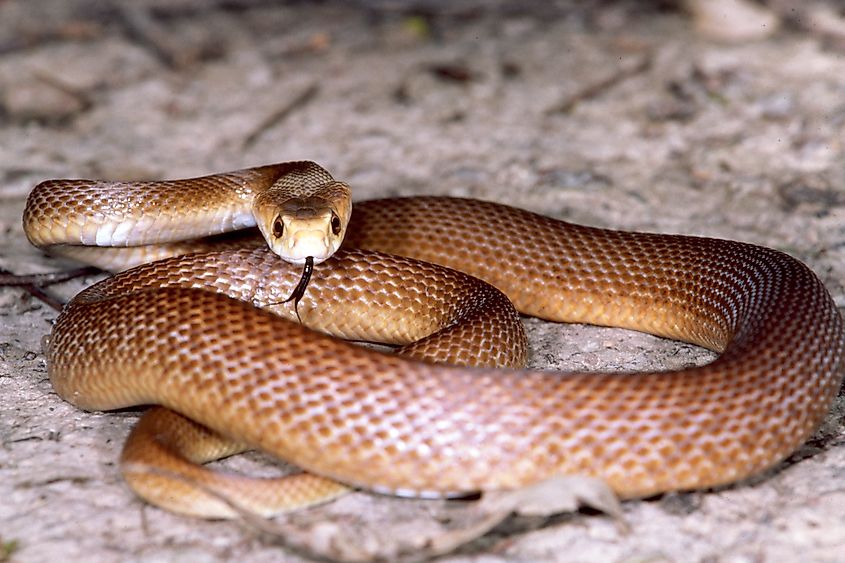
The Coastal Taipan (Oxyuranus scutellatus) is one of the most venomous snakes in the world and is found in coastal areas of Victoria, particularly in the Gippsland region. This species prefers open forests and grasslands, but it can also be near human settlements. The Coastal Taipan is a large, slender snake with a pale brown to olive-colored body. It is among the most toxic of any snake, containing neurotoxins that can cause rapid paralysis and respiratory failure.
Fortunately, the Coastal Taipan is relatively reclusive and rarely encountered by humans. However, anyone who does encounter this snake should exercise extreme caution, as its venom can kill within hours if untreated.
Common Death Adder
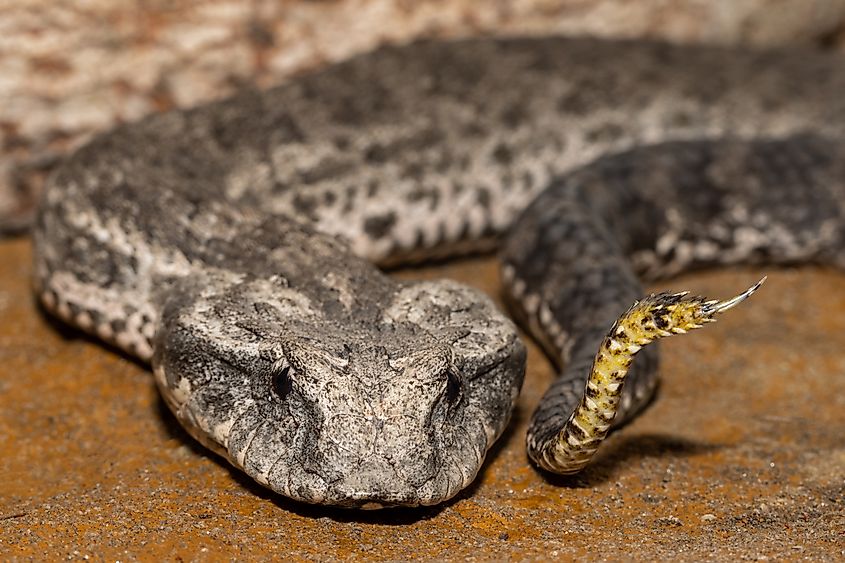
The Common Death Adder (Acanthophis antarcticus) is a highly venomous snake found throughout Victoria, especially in heathlands, woodlands, and coastal regions. This snake is easily recognized by its brown and grey-striped coloration, stout body, triangular head, and short tail, which is often tipped with a small "leaf" that it uses to lure prey. The Death Adder is a master of camouflage and often lies motionless in the undergrowth and leaf litter, waiting for small mammals or reptiles to approach.
When threatened, the Death Adder strikes with incredible speed. Its venom contains powerful neurotoxins that can cause paralysis, respiratory failure, and death. Despite its lethality, the Death Adder is not aggressive and prefers to avoid confrontation. However, its striking speed makes it dangerous to unsuspecting passersby.
Small-Eyed Snake
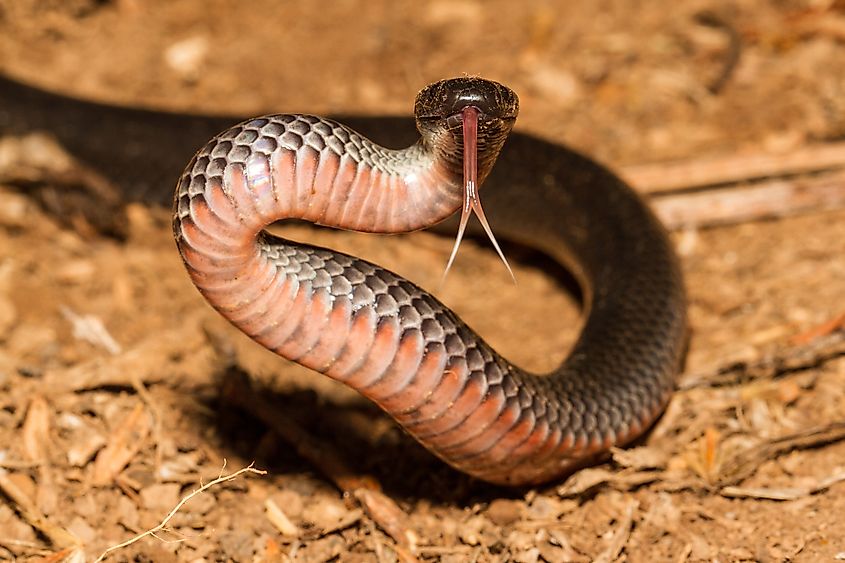
The Small-Eyed Snake (Cryptophis nigrescens) is another venomous snake in Victoria, particularly in rocky crevices, forested areas, and heathlands. This snake is small and relatively unremarkable in appearance, with a glossy, dark, almost black body and a head that is barely distinguishable from its body. Its small eyes and slow-moving behavior make it difficult to spot, and it is often overlooked by people who venture into its habitat.
While the Small-Eyed Snake is not as aggressive as some of the other species on this list, its venom contains neurotoxins that can cause paralysis, along with myotoxins that damage muscle tissue.
Western Brown Snake
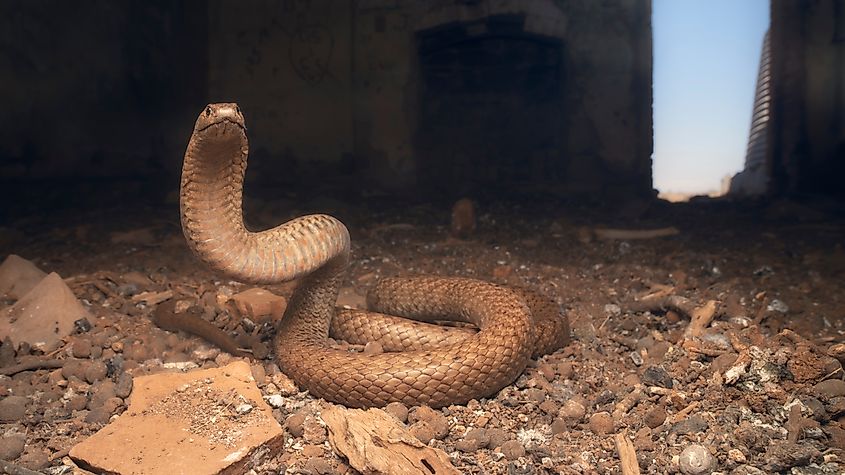
The Western Brown Snake (Pseudonaja nuchalis) inhabits the drier, more arid regions of the state, particularly in the northwest and parts of central Victoria. Western Brown Snakes prefer open grasslands, farmland, and even the edges of deserts, where they can find small mammals and reptiles to hunt. They are typically light brown or tan with darker bands or blotches along their bodies, giving them a somewhat subdued but distinct appearance.
While not as aggressive as the Eastern Brown Snake, the Western Brown Snake is still highly dangerous. Its venom is extremely potent and can cause paralysis, bleeding, and organ failure. Though Western Brown Snakes are relatively shy and tend to avoid human contact, their speed and ability to strike without warning make them a significant risk in their natural habitat.
Inland Taipan
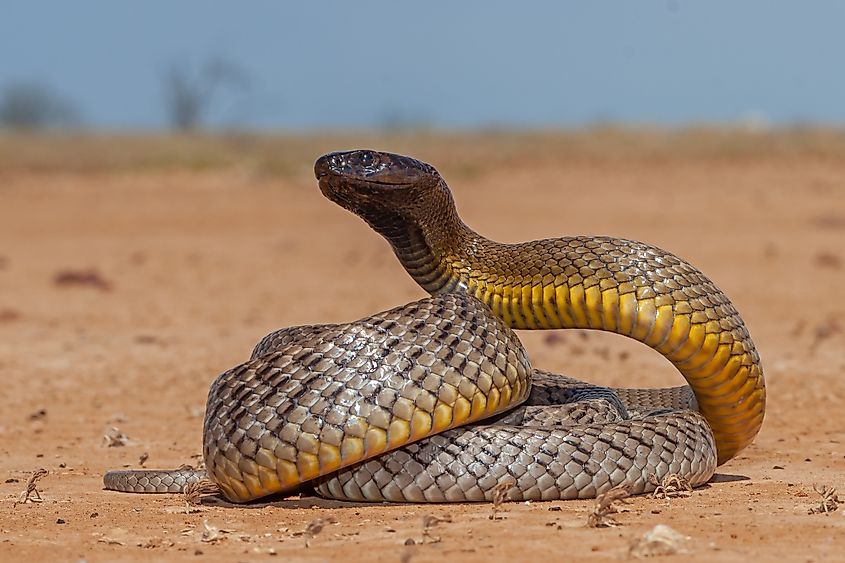
The Inland Taipan (Oxyuranus microlepidotus), also known as the Fierce Snake, is another highly venomous snake that, is primarily found in the arid regions of central Australia, particularly in areas where the borders of Queensland, South Australia, and New South Wales meet. This snake is often regarded as the most venomous in the world, as it can kill a human in less than an hour without treatment.
Despite its deadliness, it is generally reclusive and avoids human contact. The Inland Taipan is a relatively small, thin, and olive-brown snake, often with lighter scales and a distinctive yellow or cream-colored belly.
Understanding Victoria's Venomous Snakes: Awareness and Caution
Victoria is home to some of the world's most dangerous snakes, each with its own unique habitat and appearance. While the risk of encountering these deadly reptiles is low, the potential consequences of a bite can be severe. Knowledge of where these snakes live, how to identify them, and how to react if bitten can help reduce the risks posed by these venomous creatures. As always, caution and respect for wildlife are crucial when venturing into areas where these snakes reside.





